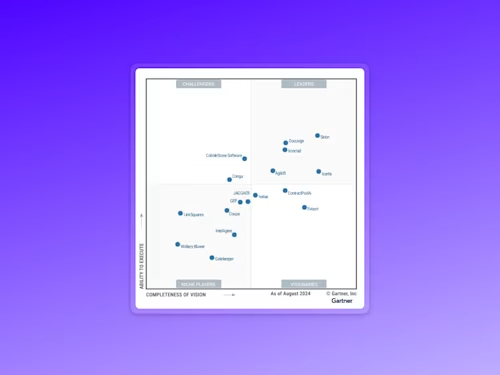
The Ultimate Guide to Electronic Signatures
What you need to know about e-signatures: How they work. Who uses them. Legal status and security. Paperless transactions have become a business requirement.

The multi-day process of signing and sending ink-to-paper signatures used to be a major road bump in the contract management process. No more. Today, procuring a court-admissible signature takes a few seconds—and can be done remotely, from a computer or mobile device.
In addition to streamlining administrative procedures, electronic signatures—or e-signatures—offer businesses an elegant way to reduce risks, save resources and build a better customer experience. From understanding how they work to evaluating the legal and procedural benefits they provide, here is everything you need to know about electronic signatures.
What are the benefits of electronic signatures?
As the business world continues its transition to a paperless, digital environment, electronic signatures are quickly becoming a business necessity. But, are they really a legitimate replacement for traditional signatures? In a word, yes. Not only are electronic signatures widely recognized as statutorily valid, they also provide some key advantages that can improve your business’ operational efficiency overnight.
Here are a few benefits to implementing electronic signatures:
Increased flexibility: from your smartphone to your personal desktop, electronic signatures make it easy to conduct business on the go
Operational efficiency: streamline contract execution and increase employee productivity by fully automating your document workflow
Risk reduction: avoid human error and ensure your signers are who they say they are with advanced methods of digital authentication
Reduced operational costs: bring your paper trail online to save money on physical supplies (paper, postage, etc.) and stop wasting business resources and time on tedious administrative tasks
Improved UX: foster stronger client relationships by providing a simple, easy-to-use document management experience for your clients
How do electronic signatures work?
The inherent simplicity of electronic signatures makes it easy to dismiss them as merely a 21st-century substitute for ink-to-paper signatures. In fact, electronic signatures are far more advanced than they appear.
Electronic signatures are full SaaS solutions that authenticate, track and store signatures and signer information at every stage of the contract lifecycle. Just like handwritten signatures, e-signatures are unique to each signer. However, while witness testimony and handwriting are the only way to guarantee the validity of a traditional signature, e-signatures offer added layers of authentication.
Every electronic signature has a specific Public Key Infrastructure (PKI), which appears as a unique sequence of encrypted numbers—one public and one private. The encrypted data offers a record of the date and time that signing took place and holds information about the signer's IP address. Learn more about how electronic signatures work and see an example of e-signatures in action right here.
Are electronic signatures legally binding?
In 2000, the U.S. federal government passed a piece of legislation called The ESIGN Act. The Act, in tandem with the Uniform Electronic Transactions Act (UETA), confirms that electronic signatures do constitute legally binding documents if and when all parties choose to sign digitally. The legal history of electronic signatures is over two decades old and still evolving, but the bottom line is that e-signatures offer as much (if not more) legal validity as traditional signatures.
In Canada, the use of electronic signatures is legal and federally regulated under PIPEDA, The Personal Information Protection and Electronic Documents Act, and on the provincial level as a part of the Uniform Electronic Commerce Act (UECA). There are a few categorical exceptions to the rule, however. Excluded from the list of legal documents for which e-signatures can be used in Canada are:
Wills and codicils
Trusts created by wills or codicils
Powers of attorney pertaining to finances or personal care
Negotiable instruments such as promissory notes
Notarizations
You can learn more about Canadian legal requirements here. Laws may differ depending on where you are and legislation governing the statutory validity of electronic signatures differs from country to country. If you’re conducting business internationally, make sure you understand how electronic signatures work around the world.
Who Uses Electronic Signatures?
With remote work steadily taking over the business world, signing documents from afar is now more than just an efficient use of time: it’s a requirement. Luckily, businesses in nearly every sector can benefit from the use of e-signatures and contract lifecycle automation. A few key business functions and industries where electronic signatures are frequently used include:
real estate transactions
sales contracts
HR/employee onboarding
government services/applications
financial services
healthcare
intellectual property licensing
non-disclosure agreements
age verification
Take the First Step Toward Contract Management Efficiency
Electronic signatures offer businesses an easy way to save money, manage risks and increase productivity—all of which will accelerate growth and drive revenue. If you’re ready to take a step toward a brighter future in contract management and want to learn more about how electronic signatures work, learn more from our team of contract management experts.
Sign up for a free trial today.
Related posts
 Insights for LeadersUpdated Feb 11, 2025
Insights for LeadersUpdated Feb 11, 2025 Insights for LeadersUpdated Feb 11, 2025
Insights for LeadersUpdated Feb 11, 2025How to Electronically Sign and Send a PDF

Liveness Detection for ID Verification

How to Electronically Sign and Send a PDF
Discover what's new with Docusign IAM or start with eSignature for free


